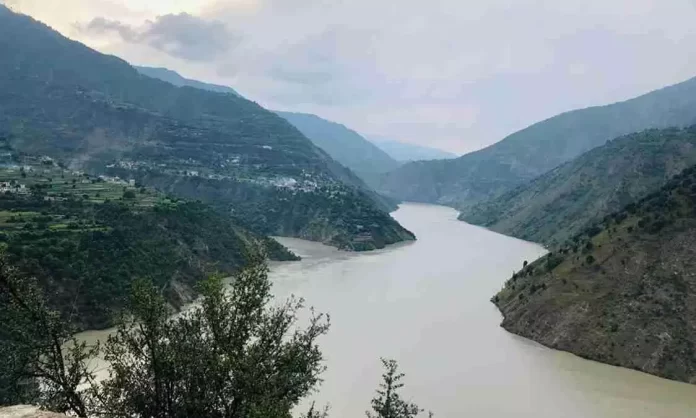India’s canal expansion plan sparks water war fears as Pakistan warns of treaty violation and agricultural collapse.
On May 16th, five Reuters journalists revealed a grim and deeply troubling report: India is allegedly considering a drastic measure to curtail Pakistan’s water supply by expanding the Indus River infrastructure. At the heart of this alarming development is a proposal to double the length of the Ranbir Canal on the River Chenab—from its current 60 kilometers to a staggering 120 kilometers. This move appears to be a calculated strategy to choke the vital flow of water from the Indus Basin to Pakistan, a lifeline for millions downstream. Is India’s action essentially an open declaration of its intent to unilaterally revoke the Indus Waters Treaty?
With plans to increase the canal’s water-carrying capacity from 40 cubic meters per second (1,400 cusecs) to 150 cubic meters per second (5,300 cusecs), this initiative could deal a devastating blow to Pakistan’s water reserves. Simple calculations underscore the scale of the potential loss: the average flow in the Chenab River where the canal originates is approximately 28,000 cusecs. By diverting such a significant volume, Pakistan’s water supply from the Chenab could plummet by nearly 20%. Quantitatively, this translates to an annual loss exceeding 5 million acre-feet (MAF) of water—valued at an estimated $10 billion on the global market.
Such a reduction would not only deplete Pakistan’s already-stressed water resources but also devastate Punjab province, the nation’s agricultural heartland. Punjab, which contributes 68% of Pakistan’s annual food grain production, stands on the precipice of an agricultural and economic disaster.
While India has long utilized the Ranbir Canal—a 19th-century irrigation channel predating the 1960 Indus Waters Treaty (IWT)—such a significant expansion raises serious questions about compliance with the treaty’s limitations. Annexure C of the IWT explicitly governs India’s agricultural use of water from western rivers like the Chenab, setting strict caps on withdrawals. For the Ranbir Canal, the treaty permits a maximum of 1,000 cusecs from April 15 to October 14 and 350 cusecs from October 15 to April 14. The proposed expansion exceeds these limits by several orders of magnitude, threatening to upend decades of delicate water-sharing agreements.
The announcement of expanding the Ranbir Canal to extract over 5,300 cusecs of water strikes like a death knell—marking, in both technical and legal terms, the tragic demise of the Indus Waters Treaty. This devastating move not only desecrates the very foundation of the treaty but also stands as a blatant violation of international law and the solemn commitments made before the International Court of Arbitration in the Kishanganga case. What was once a fragile symbol of cooperation now lies shattered, a mournful reminder of the fragility of agreements meant to safeguard peace and shared resources.
However, the question of whether water withdrawals from the Chenab River adhere to the exact quantities defined in the Indus Waters Treaty remains shrouded in uncertainty—a reality known only to Pakistan’s Ministry of Water Resources and the Indus Waters Commissioner. While the treaty explicitly outlines permissible limits, the practical enforcement and monitoring of these limits are fraught with ambiguity.
Under Article VI of the treaty, both India and Pakistan are obligated to regularly exchange river and canal data. However, this data is typically provided by India in hard copy format, either via fax or postal services, raising serious questions about its accuracy and transparency. The integrity of this data remains unverifiable—perhaps a truth only angels are privy to. Historically, communication under the treaty allowed Pakistan’s Indus Waters officials to inspect the watersheds of the Jhelum, Indus, and Chenab rivers two to three times annually. But the suspension of the treaty and current geopolitical tensions have disrupted these inspections, leaving critical questions unanswered.
A particularly pressing concern is whether the water currently flowing through the Ranbir Canal aligns with the treaty’s defined limits or if India is utilizing the canal’s full capacity of 1,400 cusecs. The treaty explicitly allows for a maximum withdrawal of 1,000 cusecs from April 15 to October 14 and 350 cusecs from October 15 to April 14. If India is indeed operating the Ranbir Canal at its fullest capacity, this would constitute a clear violation of the treaty, with significant repercussions for downstream flows into Pakistan.
The absence of transparent and verifiable data only deepens the mistrust. Without regular inspections or an independent mechanism to monitor the actual flow of water in the Ranbir Canal, doubts linger over whether the spirit and letter of the Indus Waters Treaty are being upheld—or quietly disregarded.
If executed, this move could set a dangerous precedent, straining the already fragile relations between India and Pakistan. Beyond geopolitical tensions, it risks plunging millions of Pakistanis into water scarcity and agricultural ruin. The strategic importance of the Indus Basin is undeniable, but the consequences of this act, if realized could echo for generations, transforming water from a source of life into a weapon of unparalleled destruction.
In 2008, I submitted a proposal to the Ministry of Water Resources advocating for the installation of a real-time telemetry system on the three western rivers downstream of the Baglihar Dam. This recommendation was in line with the decision of a neutral expert, who emphasized the need to interpret the treaty through the lens of modern science and technology. Unfortunately, the harsh reality is that gaining access to the ministry, which operates behind seemingly impenetrable walls, is nearly impossible.
In contrast, India has set an impressive precedent by implementing a real-time river flow data-sharing system with China, even in the absence of a formal water-sharing treaty. Instead, the two nations rely on periodically renewed memoranda of understanding (MoUs). For instance, an MoU regarding the sharing of hydrological information on the Brahmaputra River was signed in 2002, and another concerning the Sutlej River was signed in 2004. Under these agreements, China shares real-time data with India on water levels, discharge, and rainfall from hydrological stations on the Brahmaputra and Sutlej rivers. This information is crucial for India in managing its water resources and mitigating flood risks.
This move by India was foreseen nearly 15 years ago by the late Barrister Harun ur Rashid, a former Bangladeshi Ambassador to the UN in Geneva. In an op-ed, he highlighted that in December 2001, after the terrorist attack on the Indian Parliament, India explicitly considered withdrawing from the 1960 Treaty as part of a coercive diplomatic strategy against Pakistan. Reports suggested that the Indian Cabinet Committee on Security had identified the disruption of a significant water supply as a potential tool to exert pressure on Pakistan.
However, Reuters did not disclose the full truth: almost 25 years ago, during 1999–2000, the Government of India had already initiated efforts to boost irrigation infrastructure. In 1996–97, India launched the Accelerated Irrigation Benefits Program (AIBP) to provide financial assistance for Extension, Renovation, and Modernization (ERM) irrigation projects and Surface Minor Irrigation schemes, including the modification of the Ranbir and Pratap Canal Project in Jammu & Kashmir.
The Ranbir and Pratap Canals Project, with a budget of USD 41 million and USD 18 million (as per 2008–09 estimates), was conceived in 2003 and was projected to be completed in 14 and 12 years for its respective phases, benefiting approximately 55,418 hectares and 13,309 hectares of agricultural land in Jammu. Yet, except for the new Pratap Canal, both projects were kept on the back burner, waiting for the right time to execute them—potentially to abrogate the treaty.
Did the Government of India wait for the tragedy of the Pahalgam incident to set these projects in motion, aiming to unilaterally abrogate the Indus Waters Treaty? It’s a somber question that lingers. Yet, in moments like these, the pursuit of truth must continue. Let us look forward with hope as the team of five Reuters journalists works diligently to uncover deeper insights and bring clarity from India’s power corridors before the first shovel hits the ground.
Disclaimer: The opinions and analysis presented in this piece are the intellectual property of Engineer Arshad H. Abbasi. While sharing for non-commercial, educational, or public discourse purposes is permitted with proper attribution (including credit to the author), unauthorised reproduction, editing, or commercial use without author’s consent is prohibited. The views expressed are solely those of the author and do not necessarily reflect the position of any affiliated institutions.




